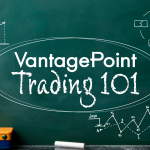Trading stock index futures, such as the E-mini S&P 500, can be a wild ride. But as the most actively traded, liquid futures contract and the most widely followed market, it’s hard not to want to be involved in the market. But how does the retail trader keep pace and spot trends?
First, they must have a technical analysis tool that can analyze both past market data on the index itself and intermarket data from various related markets. These related markets might include the Dow Jones Industrial Average, 30-year Treasury bonds, Nasdaq 100, U.S. Dollar Index, the Swiss Franc, the Euro, New York Stock Exchange Composite Index, Dow Jones Utility Average, gold, and crude oil, to name a few.
This data is processed by neural networks to create a leading indicator for the E-mini S&P 500, instead of a lagging indicator.
In this paradigm, a moving average is forecasted for a future date, then compared to today’s actual moving average which is calculated solely on past single-market prices. This approach is similar to a traditional moving average crossover strategy which compares calculated moving averages to one another. The distinction in this paradigm, which transforms this strategy from a lagging into a leading indicator, is that one of the moving averages is a forecast for a future date based substantially on intermarket data, not just calculated on recent single-market data.
Applying Intermarket Analysis to your Trading Strategy
So how can this help you trade a volatile market like the E-mini S&P? In January of 2015 the E-mini had three separate five day trends – closing down five days in a row for two stretches, and also closing higher five days in a row.
Trading software like VantagePoint could have potentially given you a two day jump on the market. For the up trending moves, if the forecasted moving average for the future date is greater than today’s actual moving average, the market is expected to move higher over that time frame. Potentially, you could have gotten in the market two days ahead of other trend followers.
Watch this video below to see how VantagePoint predicted trend moves in the E-mini S&P for February 2015 and helped traders profit over $4200 per contract in just 15 trading days. Read that full blog here.
Similarly, when the forecasted moving average is less than today’s actual moving average, the market is expected to move lower. The difference between the two moving averages from one day to the next (as they are updated each day) indicates the relative strength of the expected move over that time frame.
By utilizing leading indicators for trading the E-mini S&P 500, such as VantagePoint’s proprietary moving average crossover strategy, based on both single-market and intermarket data from globally related markets, early indications of imminent changes in trend direction can become apparent before they show up on traditional daily price charts or can be identified by popular single-market trend following indicators.
You may also like: Predictive Trend Moves in the S&P 500










